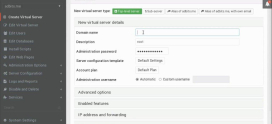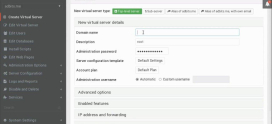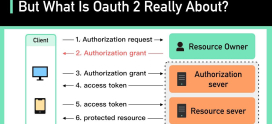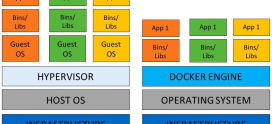
Understanding the Role of Security Groups in Cloud Server Security
In today’s digital landscape, ensuring the safety of your data in the cloud can feel overwhelming. You might be wondering, “How do I protect my information?” or “What measures can I take to secure my cloud server?” These thoughts are completely valid. With cyber threats becoming increasingly sophisticated, only the top-tier businesses can stay ahead of them without a solid security strategy. But here’s the good news: you’re not alone in this endeavor, and there are effective tools at your disposal to safeguard your virtual assets.
One of these invaluable tools is the concept of security groups. These play a crucial role in controlling access to your cloud resources and protecting your data from unauthorized access. So, let’s break down what security groups are, how they function, and why they should be part of your cloud security strategy.
As we journey through this article, I promise you’ll come away with practical insights that make cloud security less intimidating. Are you ready to dive into the world of security groups? Let’s explore together!
What Are Security Groups?
Imagine security groups as a digital bouncer for your cloud servers. They decide who gets in and who stays out. A security group is a virtual firewall for your cloud resources, defining rules that determine which traffic is allowed or denied. Just like how a bouncer checks IDs before letting guests into a nightclub, security groups scrutinize incoming and outgoing traffic based on set policies.
The Basics of Security Groups
Security groups operate at the instance level, unlike traditional firewalls that function at the network level. When you associate a security group with a server, its defined rules will apply to that specific resource. Notably, security groups are stateful; this means if you allow an incoming request from a specific IP address, the response traffic is automatically allowed regardless of the outbound rules.
Why Are Security Groups Important?
Understanding the significance of security groups is crucial for maintaining a robust cloud security posture.
Enhanced Control Over Network Traffic
With security groups, businesses have the power to define traffic permissions. This means you can minimize the potential attack surface by allowing only the necessary traffic. Consider this aspect like having a home security system: you want to make sure only your trusted neighbors have a key, while keeping intruders at bay.
Segmentation of Resources
Security groups aid in the segmentation of resources based on their sensitivity. For example, the rules for a publicly accessible web server can differ vastly from those on a database server that holds critical information. By separating these into different security groups, you enhance your security posture.
How to Set Up Security Groups
Setting up security groups might seem daunting at first, but it’s quite manageable when you break it down into steps.
Creating a Security Group
First, you’ll need to create a security group through your cloud service provider’s management console – for example, AWS or Azure. Follow these steps:
- Navigate to the security group section.
- Click on “Create Security Group.”
- Name your group and provide a description.
Defining Inbound and Outbound Rules
After creating your group, it’s time to set rules. Inbound rules determine the traffic that can access your resources, while outbound rules govern the traffic leaving your resources. Think of this like setting up a list of acceptable guests at your party:
- **Inbound Rule Example**: Allow HTTP traffic on port 80 from any IP address.
- **Outbound Rule Example**: Allow all outbound traffic to permit updates and pushes to your server.
Best Practices for Using Security Groups
While security groups are a powerful tool, utilizing them effectively is crucial.
Keep It Simple
Try to avoid complexity. Having fewer, clear rules makes management simpler and reduces the chance of misconfigurations. Think of your security group as your wardrobe; do you really need multiple jackets that look the same?
Regularly Review and Audit Rules
Over time, as your organization evolves, your requirements will change. Regular audits of your security group rules ensure they stay aligned with your current needs. This is akin to periodically cleaning out your email inbox to maintain organization.
Security Groups and Compliance
For businesses operating in regulated industries, one crucial aspect of security groups is their role in achieving compliance.
Adhering to Standards
Most compliance frameworks, like GDPR and HIPAA, require stringent access controls. Security groups help you enforce these rules effectively, ensuring only authorized personnel can access sensitive data. They serve as part of a comprehensive security strategy that keeps both your organization and your customers protected.
Challenges with Security Groups
Like any tool, security groups have their challenges.
Misconfigurations
Even minor misconfigurations can expose your resources to risks. It’s like leaving a window slightly ajar; while you think you’re secure, an intruder can easily slip through. Ensure your rules are exact and tested regularly.
Scalability Issues
As you scale your operations, managing numerous security groups can become cumbersome. Using clear naming conventions and documentation can ease this burden and help your team stay prepared for future adjustments.
Leveraging Security Groups with DarazHost
If you’re looking for a cloud service provider that simplifies your security group management, consider DarazHost. Their intuitive platform allows easy creation, configuration, and management of security groups while offering robust customer support to guide you through the process.
Comparative Benefits
Let’s take a brief moment to compare DarazHost’s security offerings with traditional approaches:
| Feature | DarazHost | Traditional Hosting |
|---|---|---|
| Integrated Security Groups | Yes | No |
| Customer Support | 24/7 Support | Varies |
| Ease of Use | User-friendly | Often complex |
FAQs
What exactly is a security group in cloud computing?
A security group acts like a virtual firewall that controls incoming and outgoing traffic for your cloud resources.
How do security groups differ from traditional firewalls?
Security groups are applied at the instance level and are stateful; traditional firewalls typically operate at the network level.
Can I use multiple security groups for a single resource?
Yes, you can associate multiple security groups with a single resource, allowing granular control over traffic rules.
What are the common misconfigurations to avoid?
Common issues include overly permissive inbound rules and not properly auditing rules regularly to match changing requirements.
Are security groups sufficient for cloud security?
While security groups are essential, they should be part of a broader security strategy that may include other measures like encryption and regular audits.
How often should I review my security group rules?
I recommend conducting a review at least quarterly or whenever there are significant changes in your infrastructure.
Is there a limit to the number of security groups I can create?
Yes, cloud service providers typically have limits on the number of security groups and rules you can use. Always refer to your provider’s documentation for specific limits.
Conclusion
Navigating the complexities of cloud security can be challenging, but understanding and implementing security groups is a vital part of protecting your data. By defining clear rules, regularly auditing them, and utilizing modern cloud services like DarazHost, you can help ensure your resources remain secure. Remember, cybersecurity is an ongoing journey; equip yourself with the right tools and knowledge to stay ahead of potential threats.









